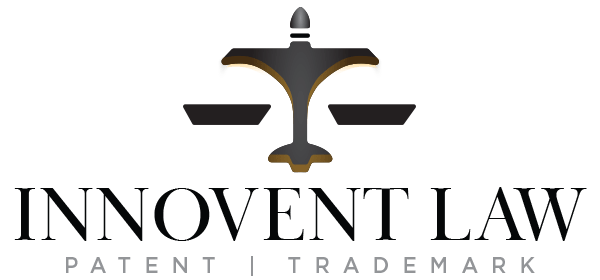Protect Your Business: Intellectual Property Inventory for Businesses
Intellectual property (IP) is the heart of many businesses, encompassing everything from logos and slogans to innovative products and confidential processes. Whether you’re a small startup or a growing enterprise, your IP represents a significant portion of your value—yet it’s often overlooked or mismanaged. An intellectual property inventory is a systematic way to catalog and protect these assets, ensuring you safeguard your competitive edge. This guide walks you through the process of creating an IP inventory, offering practical steps and insights to help you secure your business’s future.
Why does this matter? A 2021 Ocean Tomo study found that intangible assets, including IP, account for over 90% of the S&P 500’s market value. Without a clear inventory, you risk losing control of these assets, facing legal disputes, or missing out on monetization opportunities. Let’s dive into why you need one and how to build it effectively.
Why You Need an Intellectual Property Inventory
An IP inventory isn’t just a list—it’s a strategic tool. First, it protects your business from legal vulnerabilities. Imagine a competitor claiming your unregistered trademark because you missed a renewal deadline. Second, it clarifies your company’s worth, which is critical during fundraising, mergers, or sales. Investors want to see a well-documented IP portfolio. Third, it simplifies management by giving your team a roadmap to maintain and leverage these assets.
For example, a mid-sized design firm once lost a lucrative contract because it couldn’t prove ownership of a key logo design. An IP inventory would have documented its copyright, avoiding the issue entirely. Statistics back this up: the World Intellectual Property Organization (WIPO) reports that businesses with strong IP management are 30% more likely to secure funding.
Step 1: Identify All Intellectual Property
Start by identifying every piece of IP your business owns. This includes registered assets like trademarks, patents, and copyrights, as well as unregistered ones like trade secrets or domain names. Think broadly—your website content, employee training manuals, or even a unique customer outreach strategy could qualify. Involve your team to brainstorm and ensure nothing slips through the cracks.
Pro Tip: Use a spreadsheet to track each asset. Include columns for the IP type, description, creation date, and status (e.g., registered, pending, or in use). This keeps your inventory organized from the start.
Step 2: Categorize Your Intellectual Property
Once identified, categorize your IP into four main types:
- Trademarks: Protect brand identifiers like names, logos, or taglines.
- Patents: Cover inventions, such as a new gadget or software algorithm.
- Copyrights: Apply to creative works, including blog posts, videos, or designs.
- Trade Secrets: Encompass confidential info, like a proprietary recipe or sales playbook.
Categorization helps you tailor protection strategies. For instance, trademarks need registration, while trade secrets rely on internal safeguards like NDAs.
Step 3: Document Ownership and Registration Details
For each asset, record key details: who created it, when, and its legal status. For trademarks, note registration numbers and renewal dates. For patents, include grant dates and expiration timelines. Trade secrets require documentation of protection measures, such as locked files or restricted access. This step ensures you can defend your IP if challenged.
Example: A bakery might document its secret frosting recipe as a trade secret, noting it’s shared only with key staff under NDA, created in 2019.
Step 4: Assign Responsibility for Each Asset
Designate someone to oversee each IP asset. In a small business, this could be the owner; in a larger firm, it might be the legal or marketing team. Clear ownership prevents neglect—think of the trademark manager as the guardian who tracks renewals and monitors infringements.
Tool Suggestion: Use software like Trello to assign tasks and set reminders for IP-related deadlines.
Step 5: Regularly Update Your IP Inventory
Your IP evolves with your business, so your inventory must too. Schedule quarterly or annual reviews to add new assets (e.g., a product launch design), update expired registrations, or revise ownership details. This habit keeps your IP protection current and maximizes its value.
Case Study: A tech company added its new app’s code to its inventory post-launch, securing a patent that later attracted a major investor.
Benefits of Maintaining an IP Inventory
A well-maintained IP inventory delivers:
- Legal Protection: Reduces risks of infringement or loss of rights.
- Business Valuation: Highlights IP as an asset for investors or buyers.
- Risk Mitigation: Spots gaps in protection before they become problems.
- Growth Opportunities: Identifies IP for licensing or marketing use.
For instance, a registered trademark can boost brand credibility in ad campaigns, while a patent might open doors to partnerships.
Common Mistakes to Avoid
Don’t sabotage your efforts with these pitfalls:
- Skipping Unregistered IP: Trade secrets need attention, even without formal registration.
- Forgetting Employee IP: Clarify in contracts that work-related IP belongs to the business.
- Ignoring Global Needs: Register IP in international markets if you expand abroad.
Conclusion
An intellectual property inventory is your business’s shield and spotlight—protecting your assets while showcasing their value. By identifying, categorizing, documenting, assigning, and updating your IP, you’ll build a robust system that supports growth and resilience. Start today to secure your innovations and avoid costly oversights.
Free Resource: Download our IP Inventory Checklist here to kickstart your process with confidence.

